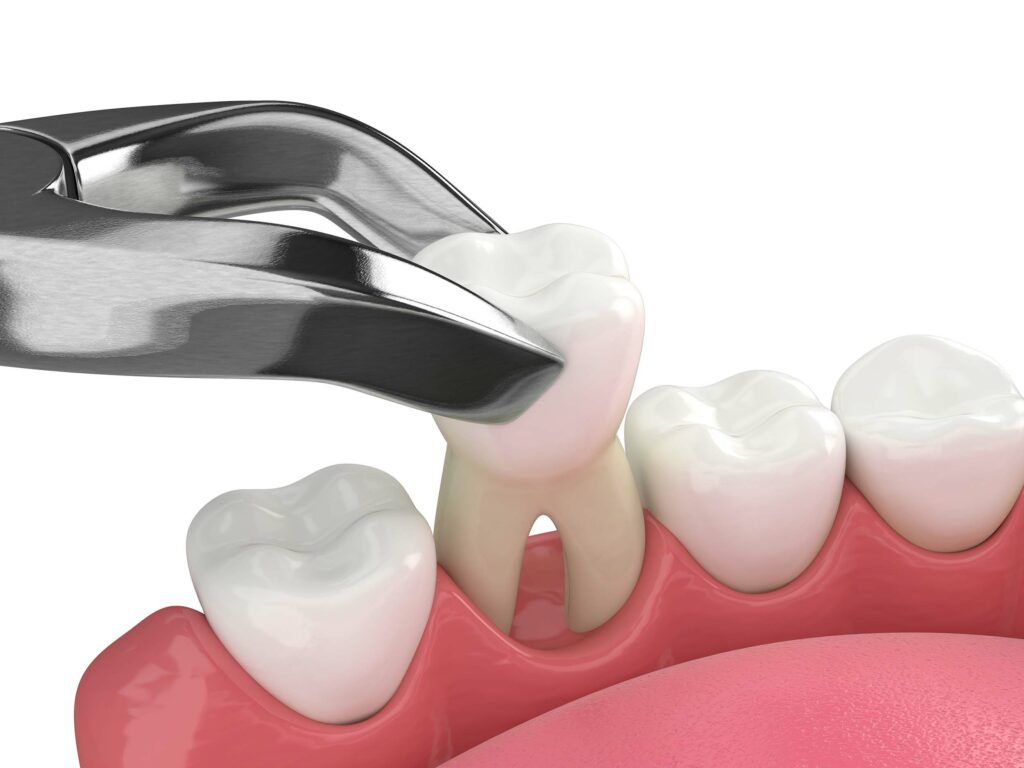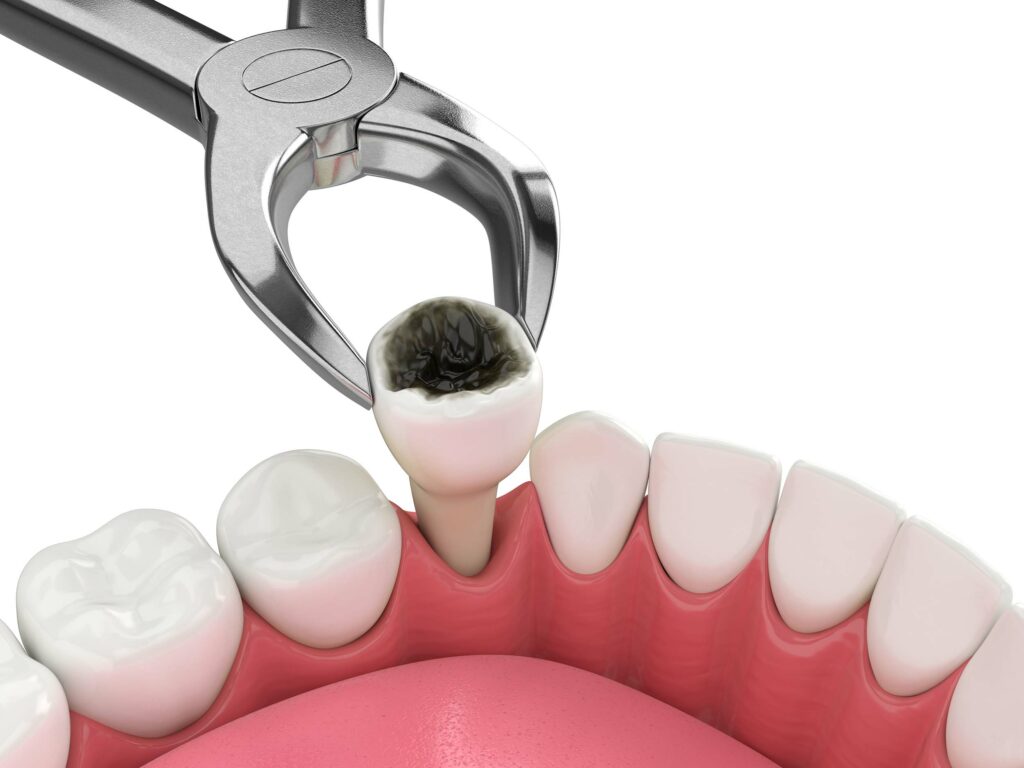Single/Multiple Tooth Extraction
Teeth may require extraction when they are misaligned or un-restorable (root canals, crowns, or fillings are unable to prolong their use). Patients typically experience pain-free surgery thanks to the use of powerful local anesthetics that block nerve receptors. General anesthetics are also available to allow patients to sleep through surgery. Prescription medication is typically used to ensure patient comfort during recovery.


What to Expect After a Tooth Extraction
Post-Extraction Clotting
Following tooth extraction, it’s crucial for a blood clot to form to stop bleeding and initiate healing. We advise you to bite on gauze for 30-45 minutes post-procedure. If bleeding persists, use another gauze pad and bite firmly for an additional 30 minutes, repeating as needed.
Once the blood clot forms, avoid disrupting it for 72 hours. Refrain from vigorous rinsing, straw use, smoking, alcohol consumption, or brushing near the extraction site. These actions can dislodge the clot and hinder healing. Limit strenuous exercise for 24 hours to prevent increased bleeding.
Pain Management
Expect some pain and swelling post-extraction. Apply an ice pack or a cold pack to minimize swelling. Take prescribed pain medication as directed, and the swelling should subside within 48 hours.
Follow medication instructions and contact the office if it’s ineffective. Continue antibiotics for the prescribed duration, even if infection symptoms vanish. Stay hydrated and consume soft, nutritious food on the extraction day, transitioning to regular eating when comfortable.
Resuming your dental routine after 24 hours is essential, including brushing and flossing daily to expedite healing and maintain oral hygiene. Within a few days, you'll recover and return to regular activities. In case of heavy bleeding, severe pain, persistent swelling for 2-3 days, or medication reactions, promptly contact our office.
Tooth Replacement
Missing teeth can be replaced by removable dentures, bridges, or dental implant-supported crowns. Dental implants most closely mimic the look and feel of natural teeth. Patients choosing dental implant replacement often benefit from minor bone grafting at the time of extraction to preserve the normal anatomy required for dental implant restoration.
